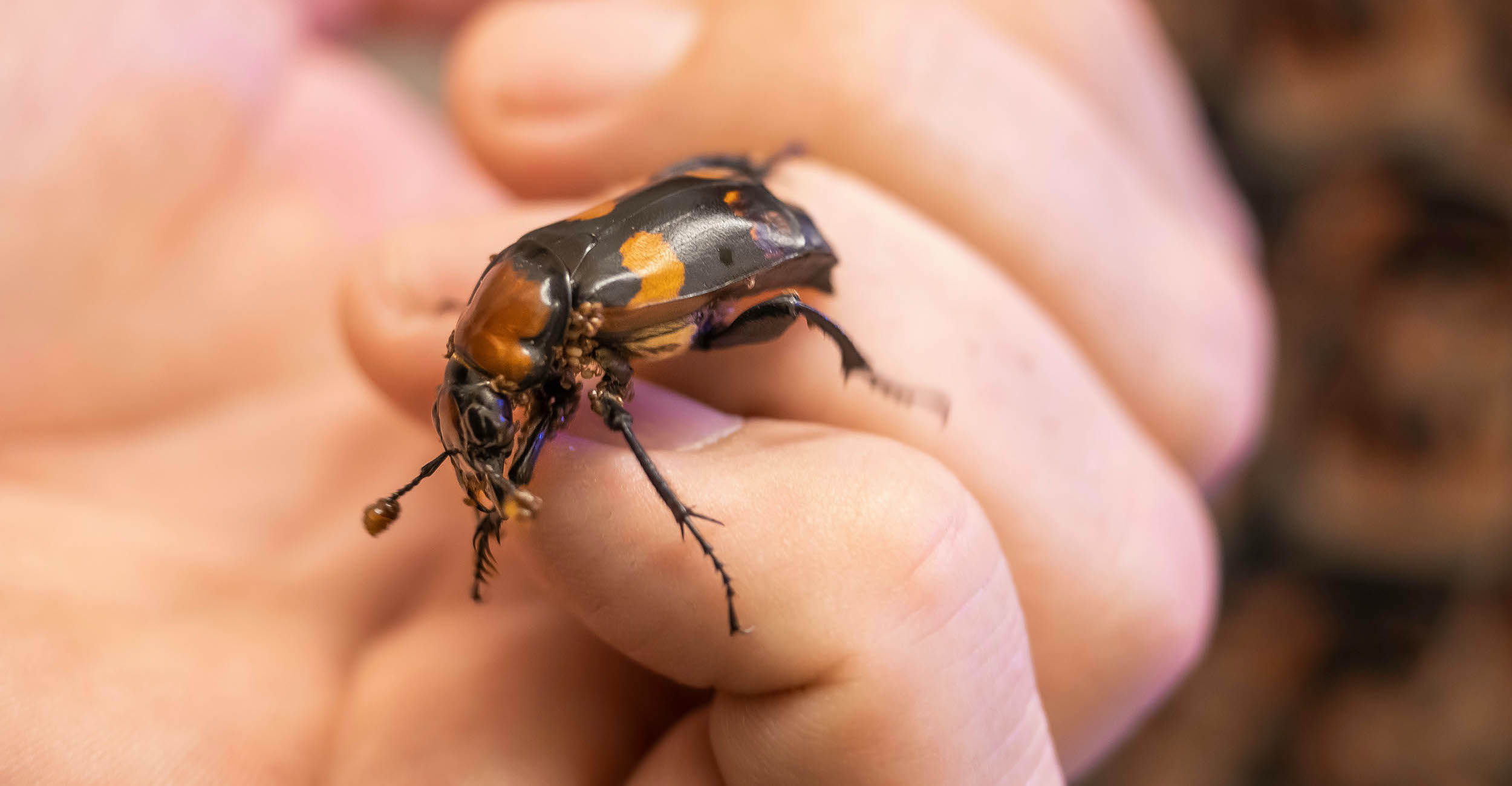
Beetle saliva shows potential to create a natural antibiotic
Tuesday, January 25, 2022
Media Contact: Alisa Boswell-Gore | Agricultural Communications Services | 405-744-6792 | alisa.gore@okstate.edu
Oklahoma State University scientists are excited about a brown goo secreted by a rare beetle.
Why all the excitement over bug saliva?
Because it could lead to the creation of a natural antibiotic and meat preservative, according to Wyatt Hoback, associate professor in the OSU Department of Entomology and Plant Pathology.
American burying beetles seek out small animal carcasses and work together to bury it in the ground. Afterward, the insects use the resources in the carcass to raise their offspring.
“These beetles secrete a bright brown liquid from their mouth and from their back end, and that brown liquid helps digest part of the carcass but also preserve part of the carcass,” Hoback said.
Hoback has studied the beetle for more than 20 years and contributed to the conservation of this rare species, which was on the endangered species list from 1989 to 2020. Its status changed to “threatened” last year despite scientists’ predictions that the species will die out in Oklahoma and Arkansas within the next 15 to 20 years. The beetle was once found in 35 states but now only exists in six.
Why is it so important to conserve these carcass-eating creatures?
“One of the biggest things they do is reduce food sources for flies,” Hoback said. “Beetles find the carcass and bury it in the ground so flies can’t get to it, and that reduces the fly population, which reduces transmission of disease in humans and livestock.”
Hoback has studied the salivary glands of the beetle to determine which proteins are responsible for the beetle’s ability to combat bacteria and fungi that can degrade a carcass. In his current research, he looks at how American burying beetles survive during their six-month winter hibernation period in which they burrow underground and do not eat. By studying how the beetle behaves and survives during its winter hibernation period and how changes in climate impact that cycle, researchers can identify appropriate habitats for reintroduction of the American burying beetle.
“One of the ways of dealing with the possibility of American burying beetles in Oklahoma and Arkansas going extinct in the next 20 years is to translocate them to appropriate habitats farther north and just keep moving them so that the species survives,” Hoback said. “We don’t know anything about them through the winter, and if we move them into the wrong habitat, they die anyway, so this research can help us make informed conservation decisions.”
Hoback said no one has ever investigated the molecular mechanisms in the beetle’s saliva that allows for the preservation of animal carcasses. That’s why he has now been joined in his research by John Gustafson, department head and professor in the OSU Department of Biochemistry and Molecular Biology, and Darren Hagen, assistant professor of animal genomics in the OSU Department of Animal and Food Sciences.
“What we're really excited about is analyzing what's referred to as the microbiome of this organism. The microbiome is a collection of microbes that live within and on an organism,” Gustafson said. “With the burying beetle, the reason why we're interested in the microbiome, i.e., isolating the bacteria, is because burying beetles have the capability of preparing carcasses in such a way that they don't degrade quickly. We think that the organisms that live within the burying beetle’s saliva are capable of reducing the degradation of flesh, so there is a possibility we could identify bacteria that will prevent meat from spoiling.”
Hagen is examining the genetic sequence of the beetle.
“By doing the gene sequencing and analysis, we identified a handful of genes that seem to be turned on in the saliva secretions due to feeding,” Hagen said. “We will continue to follow up on that and try to understand any role those genes might play in the preservation of the carcass.”
The hope is that this research will lead to new antibiotic treatments and novel meat preservation techniques.
“This could potentially serve as a natural source of bacterial suppression. If you think about meat processing plants, it's key to keep bacteria out or at a low rate, and perhaps one day, we could make these completely natural products that we can sort of spritz around the plant to keep the bacteria at bay,” Hagen said.
Hoback said the Tulsa Zoo and the Cherokee Nation are major financial supporters of the American Burying Beetle Project. The Tulsa Zoo raised more than $17,000 for the research in the summer of 2021, and the Cherokee Nation raised $10,000. Part of the funding to create and maintain a laboratory colony for the beetle was provided through fundraising at the Tulsa Zoo, while the Cherokee Nation has offered support with the goal of improving conservation of the species.
“The research collaboration between an ecologist who understands the natural history, a biochemist who conducts research on microbes and antibiotic resistance and an animal scientist who researches gene regulation creates a synergism that benefits all three disciplines and advances our understanding of how these beetles survive in the environment while providing insights into potential new methods to address human challenges in agriculture,” Hoback said.
Watch SUNUP TV’s episode highlighting the American burying beetle research for more information.
